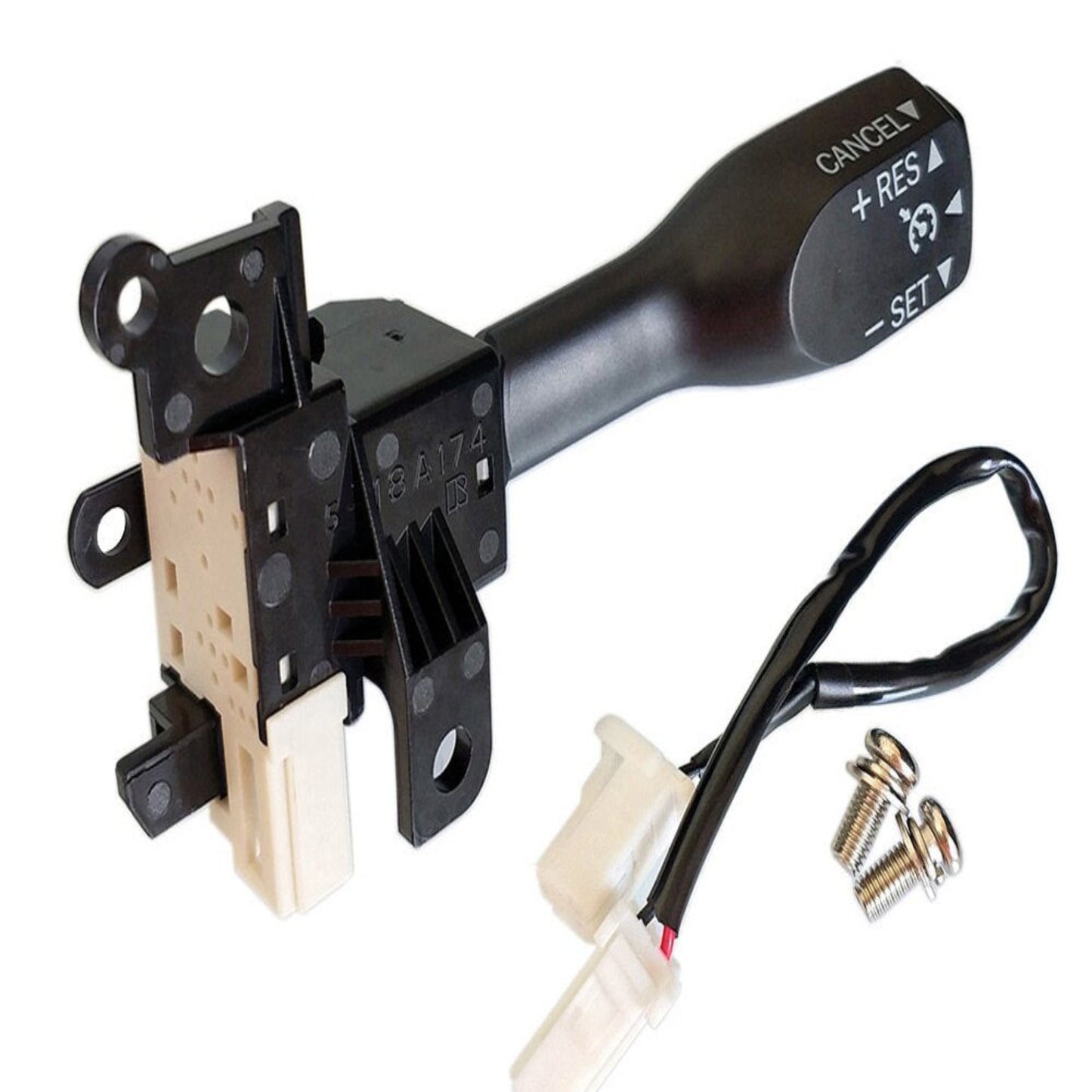autokings.pk
Toyota Yaris Cruise Control Kit 2020-2024
Toyota Yaris Cruise Control Kit 2020-2024
Couldn't load pickup availability
Cruise control (also known as speed control, cruise command, autocruise, or tempomat) is a system that automatically controls the speed of a motor car. The system is a servomechanism that takes over the throttle of the car to maintain a steady speed as set by the driver.
Operation:
The driver must bring the vehicle up to speed manually and use a button to set the cruise control to the current speed.
The cruise control takes its speed signal from a rotatinhg driveshaft, speedometer cable, wheel speed sensor from the engine's RPM, or from internal speed pulses produced electronically by the vehicle. Most systems do not allow the use of the cruise control below a certain speed - typically around 25 or 30 mph (40 or 48 km/h). The vehicle will maintain the desired speed by pulling the throttle cable with a solenoid, a vacuum-driven servomechanism, or by using the electronic systems built into the vehicle (fully electronic) if it uses a 'drive-by-wire' system.
All cruise control systems must be capable of being turned off both explicitly and automatically when the driver depresses the brake, and often also the clutch. Cruise control often includes a memory feature to resume the set speed after braking, and a coast feature to reduce the set speed without braking. When the cruise control is engaged, the throttle can still be used to accelerate the car, but once the pedal is released the car will then slow down until it reaches the previously set speed.
On the latest vehicles fitted with electronic throttle control, cruise control can be integrated into the vehicle's engine management system. Modern "adaptive" systems include the ability to automatically reduce speed when the distance to a car in front, or the speed limit, decreases.
The cruise control systems of some vehicles incorporate a "speed limiter" function, which will not allow the vehicle to accelerate beyond a pre-set maximum; this can usually be overridden by fully depressing the accelerator pedal. (Most systems will prevent the vehicle from increasing engine speed to accelerate beyond the chosen speed, but will not apply the brakes in the event of over speeding downhill, nor stop the car from going faster than the chosen speed with the engine just idling.)
On vehicles with a manual transmission, cruise control is less flexible because the act of depressing the clutch pedal and shifting gears usually disengages the cruise control. The "resume" feature has to be used each time after selecting the new gear and releasing the clutch. Therefore, cruise control is of most benefit at motorway/highway speeds when top gear is used virtually all the time. The speed limiter function however does not have this problem..)
On vehicles with a Cruise control (also known as speed control, cruise command, autocruise, or tempomat) is a system that automatically controls the speed of a motor car. The system is a servomechanism that takes over the throttle of the car to maintain a steady speed as set by the driver.
Operation:
The driver must bring the vehicle up to speed manually and use a button to set the cruise control to the current speed.
The cruise control takes its speed signal from a rotating driveshaft, speedometer cable, wheel speed sensor from the engine's RPM, or from internal speed pulses produced electronically by the vehicle. Most systems do not allow the use of the cruise control below a certain speed - typically around 25 or 30 mph (40 or 48 km/h). The vehicle will maintain the desired speed by pulling the throttle cable with a solenoid, a vacuum-driven servomechanism, or by using the electronic systems built into the vehicle (fully electronic) if it uses a 'drive-by-wire' system.
All cruise control systems must be capable of being turned off both explicitly and automatically when the driver depresses the brake, and often also the clutch. Cruise control often includes a memory feature to resume the set speed after braking, and a coast feature to reduce the set speed without braking. When the cruise control is engaged, the throttle can still be used to accelerate the car, but once the pedal is released the car will then slow down until it reaches the previously set speed.
On the latest vehicles fitted with electronic throttle control, cruise control can be integrated into the vehicle's engine management system. Modern "adaptive" systems include the ability to automatically reduce speed when the distance to a car in front, or the speed limit, decreases.
The cruise control systems of some vehicles incorporate a "speed limiter" function, which will not allow the vehicle to accelerate beyond a pre-set maximum; this can usually be overridden by fully depressing the accelerator pedal. (Most systems will prevent the vehicle from increasing engine speed to accelerate beyond the chosen speed, but will not apply the brakes in the event of overspeeding downhill, nor stop the car from going faster than the chosen speed with the engine just idling.)
On vehicles with a manual transmission, cruise control is less flexible because the act of depressing the clutch pedal and shifting gears usually disengages the cruise control. The "resume" feature has to be used each time after selecting the new gear and releasing the clutch. Therefore, cruise control is of most benefit at motorway/highway speeds when top gear is used virtually all the time. The speed limiter function however does not have this problem.
Materials
Materials
Shipping & Returns
Shipping & Returns
Dimensions
Dimensions
Care Instructions
Care Instructions

-
Free Shipping
Free shipping on order above 2000 rs.
-
Hassle-Free Exchanges
7 days easy returns.
Conditions Apply.

